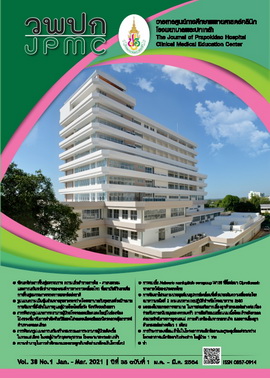Galangal
Main Article Content
Abstract
Galangal is also know as Thai ginger or Siamese ginger (because it resembles fresh ginger so much). It’s commonly found in Thai, Indonesian, and Malaysian cooking. The skin of galangal is smoother and paler than ginger and its flesh is much harder. It can’t be grated like ginger can, but instead must be sliced. The flavor of galangal is much stronger too; it’s earthy, sharp, and extra citrusy.
Article Details
References
Bendjeddou D, Lalaoui K, Satta D. Immunostimulating activity of the hot water-soluble polysaccharide extracts of Anacyclus pyrethrum, Alpinia galangal and Citrullus colocynthis. J Ethnopharmacol 2003;88:155-60.
Bhakuni DS, Dhar ML, Dhar MM, Dhawan BN, Mehrotra BN. Screening of Indian plants for biological activity. II. Indian J Exp Biol 1969;7:250-62.
Chudiwal AK, Jain DP, Somani RS. Alpinia galanga willd.– an overview on phyto - pharmacological properties. Indian J Nat Prod Resour 2010;1:143-9.
Faculty of Pharmaceutical Sciences, Ubon Ratchathani University. Alpinia galanga [Internet]. 2010 [cited 2020 may 29]. Available from: http://www.thaicrudedrug.com/main.php?action=viewpage&pid=173
Faculty of Pharmaceutical Sciences, Ubon Ratchathani University. Alpinia galangal [Internet] 2010 [cited 2020 may 29]. Available from: http://www.phargarden.com/main.php?action=viewpage&pid=22
Go EJ, Kim HR, Chung SY, Jeong YH, Kim NH, Han AR, et al. Evaluation on the P-glycoprotein inhibitory activity of Indonesian medicinal plants. Nat Prod Sci 2004;10:85-8.
Janssen AM, Scheffer JJ. Acetoxychavicol Acetate, an Antifungal Component of Alpinia galanga1. Planta Med 1985; 51:507-11.
Muangnoi P, Lu M, Lee J, Thepouyporn A, Mirzayans R, Le XC, et al. Cytotoxicity, apoptosis and DNA damage induced by Alpinia galanga rhizome extract. Planta Med 2007; 73:748-54.
Phitak T, Choocheep K, Pothacharoen P, Pompimon W, Premanode B, Kongtawelert P. The effects of p-hydroxycinnamaldehyde from Alpinia galanga extracts on human chondrocytes. Phytochemistry 2009;70:237-43.
Staples GW, Kristiansen MS. Monden S. Ethnic Culinary Herbs: a guide to identification and cultivation in Hawaii. Hawaii: University of Hawaii Press publishing; 1999.
Yasuhara T, Manse Y, Morimoto T, Qilong W, Matsuda H, Yoshikawa M, et al. Acetoxybenzhydrols as highly active and stable analogues of 1'S-1'-acetoxychavicol, a potent antiallergic principal from Alpinia galanga. Bioorg Med Chem Lett 2009;19:2944-6.

